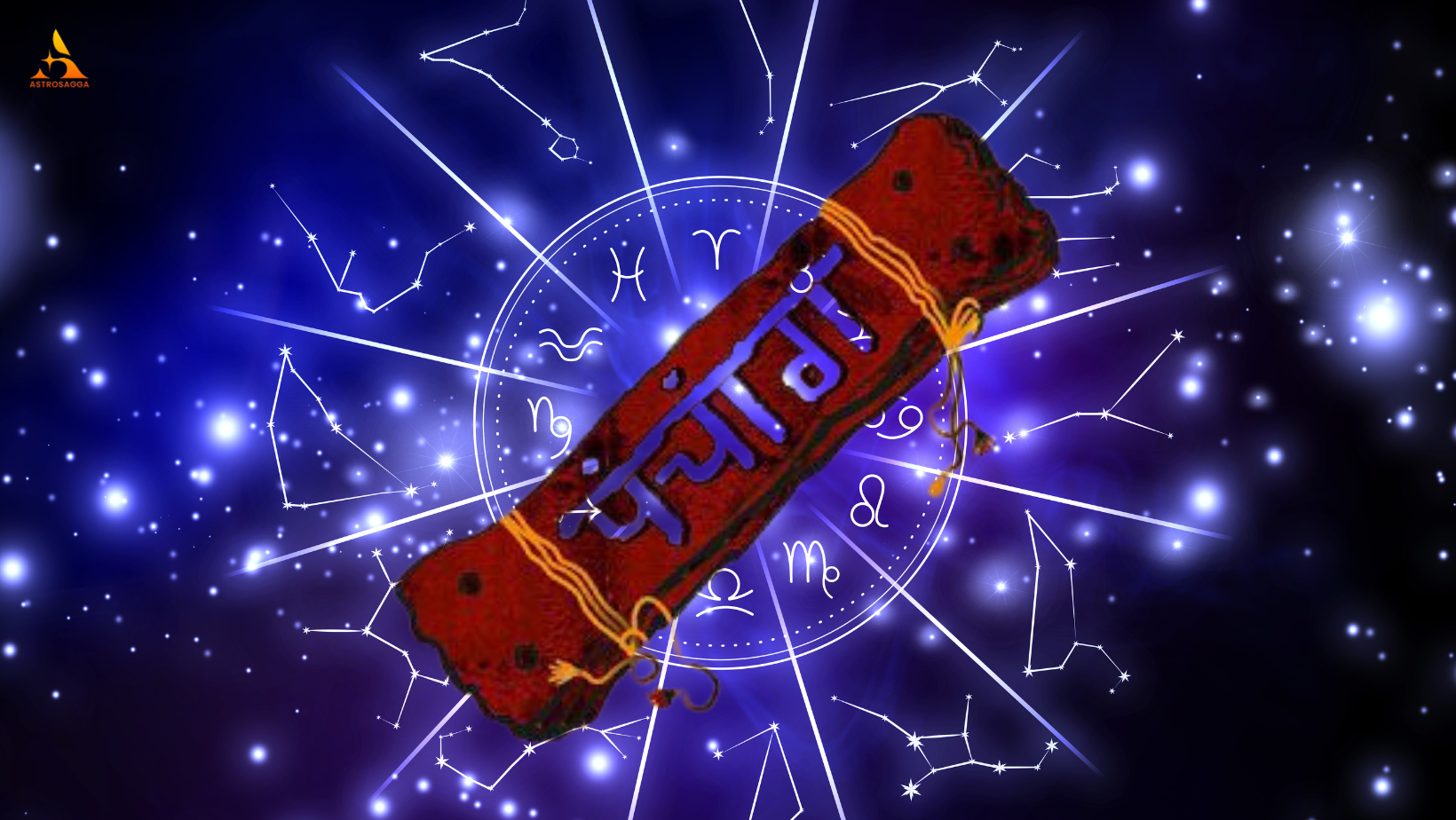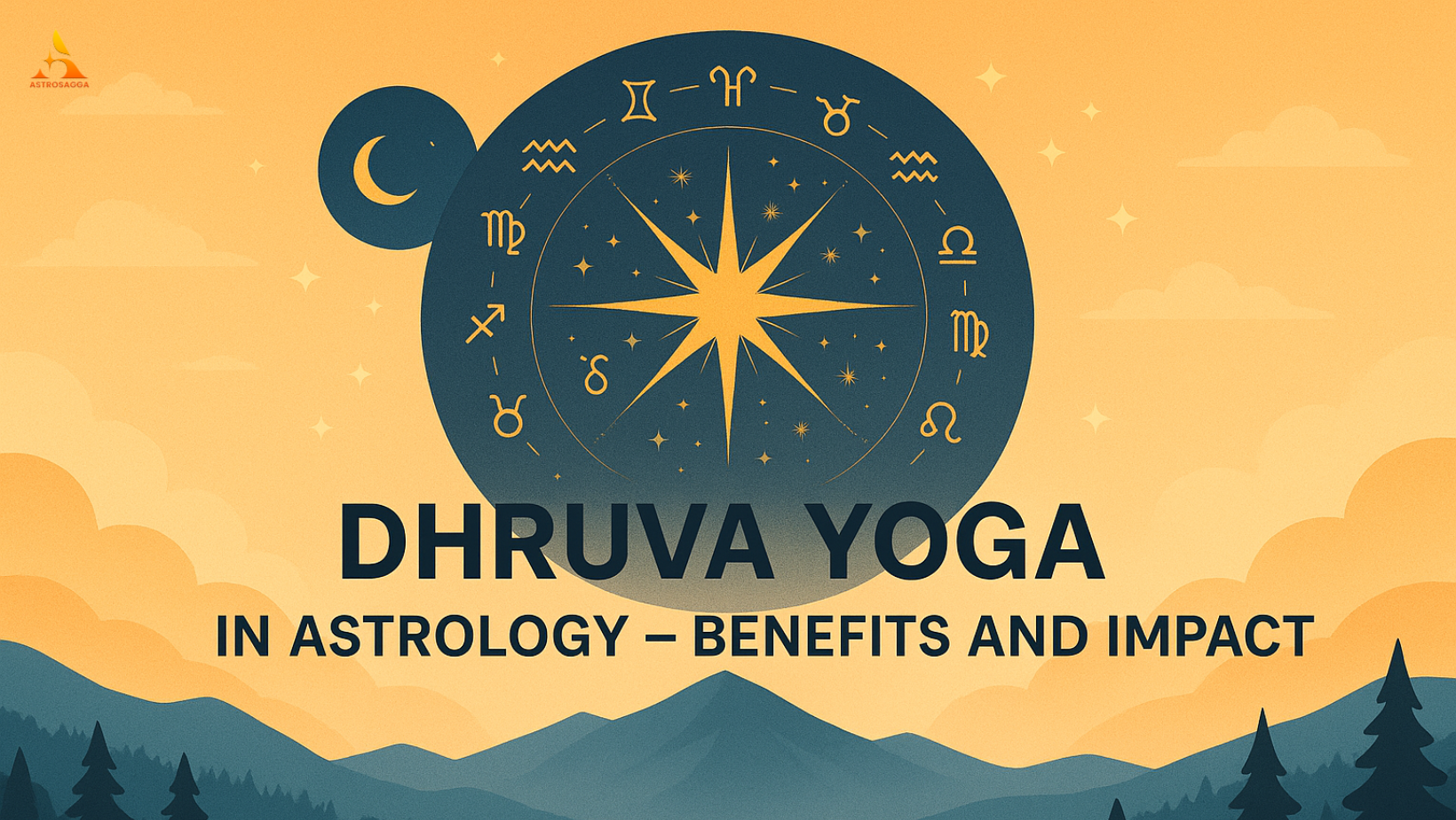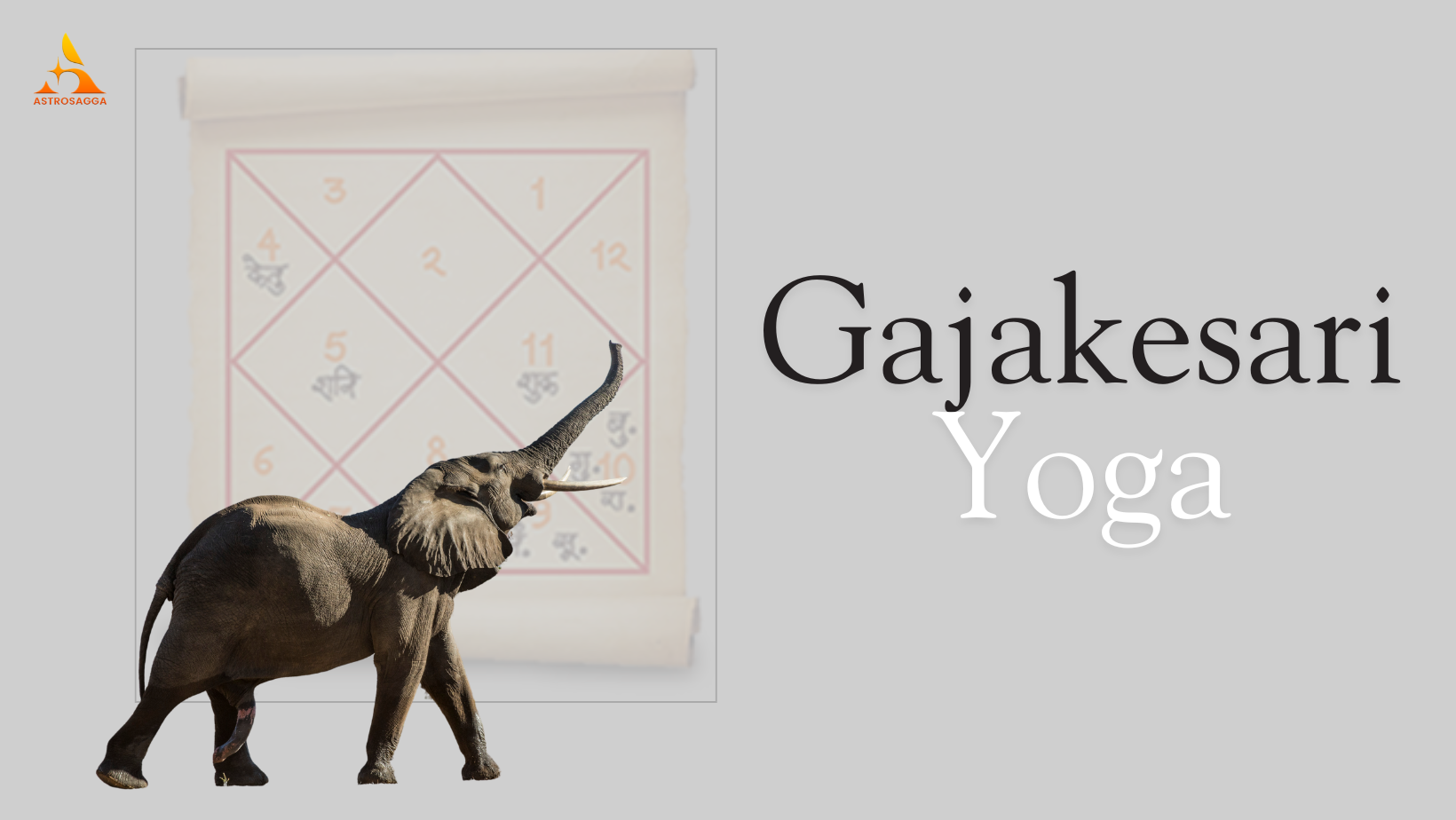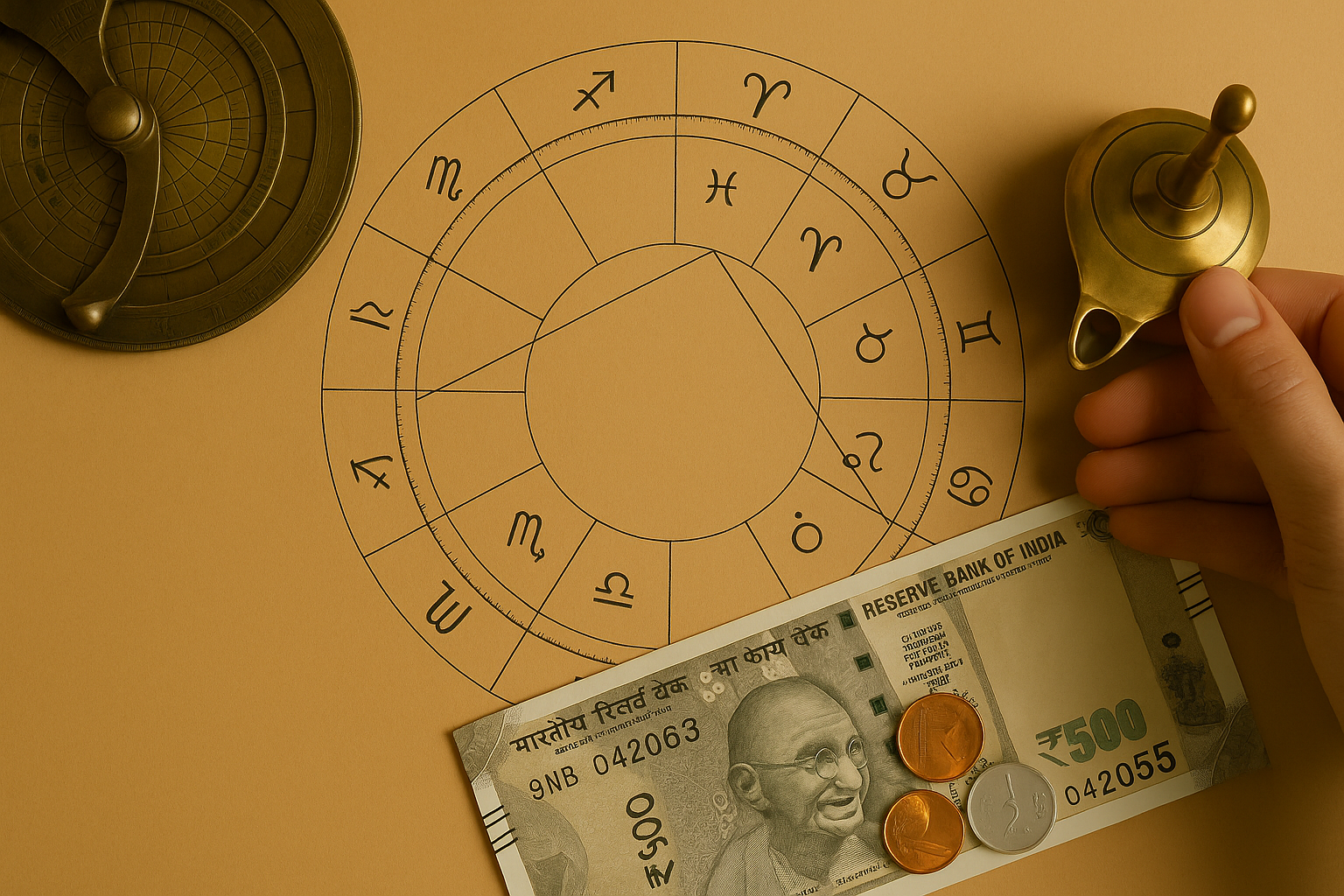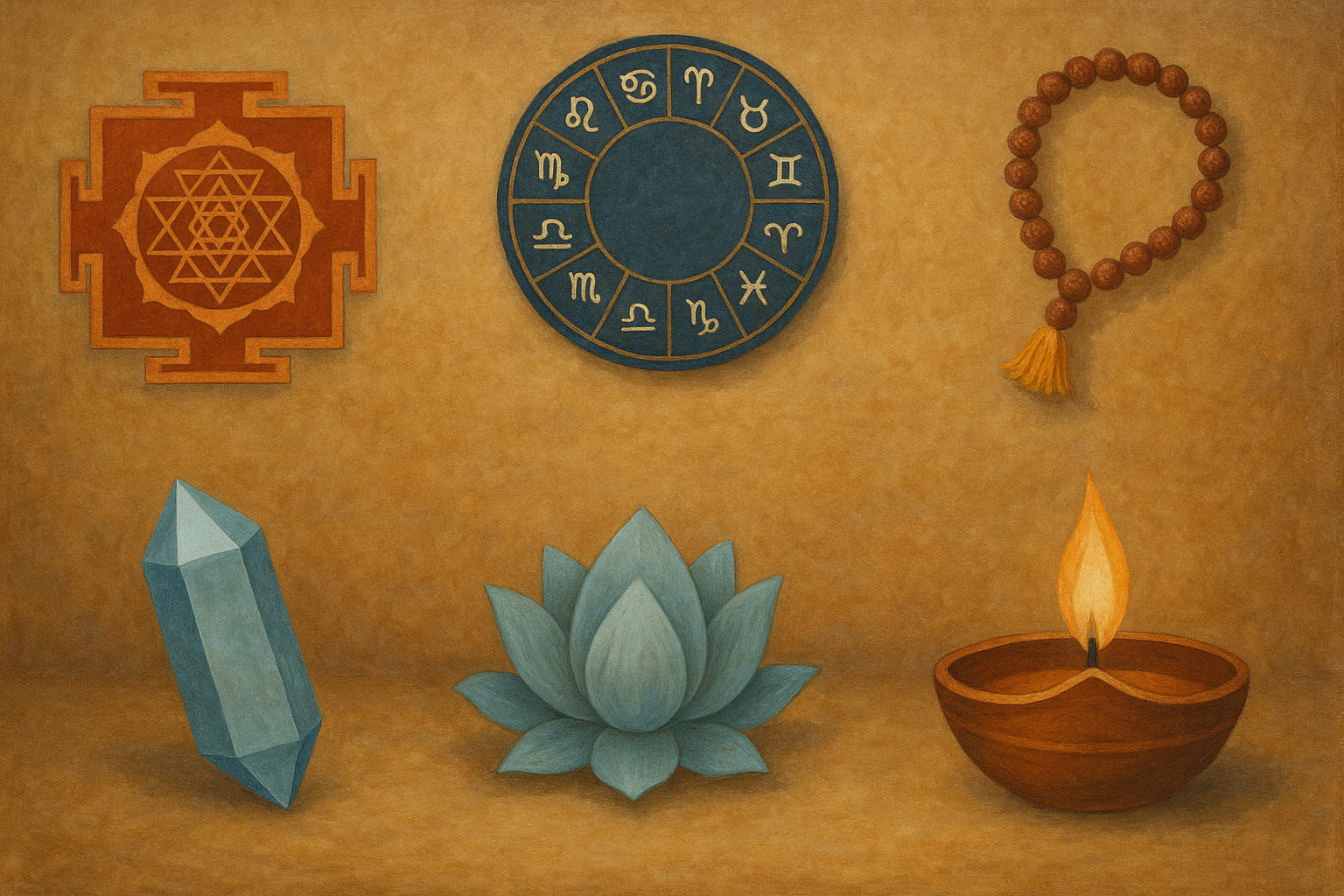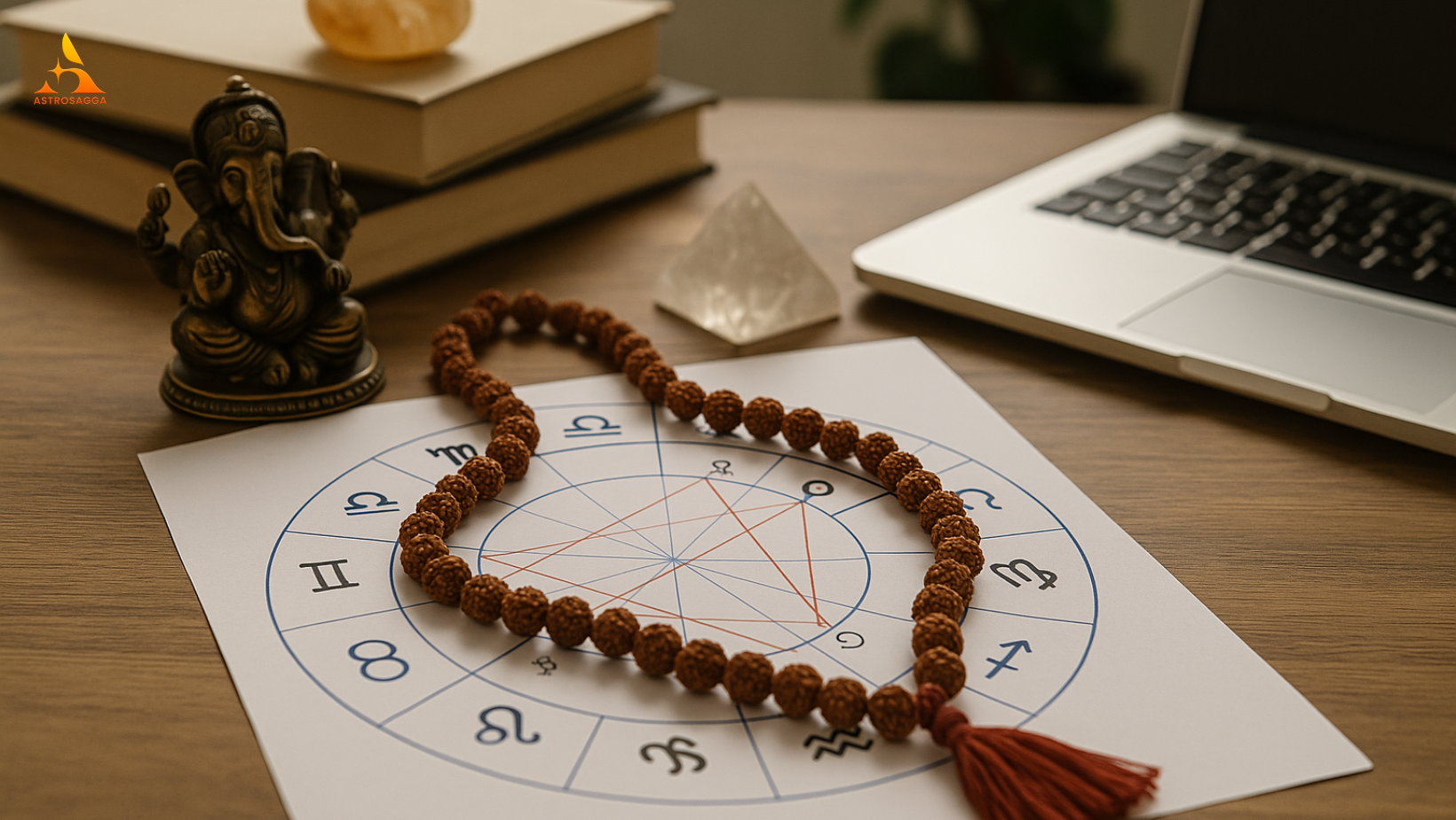In the vast world of Vedic astrology, the Panchang holds a significant place. It is not just a calendar, but a sacred tool that carries deep astrological wisdom. Used by astrologers, priests, and common people alike, the Panchang helps determine the best times for important activities. Whether it’s a marriage ceremony, starting a new job, buying property, or performing a puja, the Panchang acts as a cosmic guide.
Let’s understand what a Panchang is, what it includes, and how you can use it in your daily life.
What is Panchang?
The word Panchang comes from Sanskrit – Pancha means five, and Anga means limbs or parts. So, Panchang means “five parts” of the day. These five elements are used to understand the energy of the day and how it aligns with your actions.
The five elements of the Panchang are:
Tithi (Lunar Day)
Vaar (Day of the Week)
Nakshatra (Constellation or Star)
Yoga (Luni-Solar Day)
Karana (Half of a Tithi)
Each of these elements plays a unique role in influencing the quality of the day and is deeply rooted in the movement of the Moon and the Sun.
1. Tithi – The Lunar Day in Vedic Astrology
In Vedic astrology, Tithi is one of the most important elements of the Panchang. It refers to the lunar day, based on the movement and position of the Moon in relation to the Sun. While the solar calendar follows the movement of the Sun, the lunar calendar is based on the phases of the Moon—and Tithi is the measurement of those phases.
Let’s understand it step by step.
What is a Tithi?
A Tithi is the time taken by the Moon to move 12 degrees ahead of the Sun in the sky.
As the Moon revolves around the Earth and the Earth moves around the Sun, their relative positions keep changing. When the angular distance between the Moon and the Sun increases by 12 degrees, a new Tithi begins.
There are 30 Tithis in a lunar month, divided into two parts:
Shukla Paksha (Waxing Phase): New Moon to Full Moon
Krishna Paksha (Waning Phase): Full Moon to New Moon
Each Paksha has 15 Tithis.
List of 30 Tithis (Lunar Days)
Shukla Paksha (Bright Half)
Pratipada
Dwitiya
Tritiya
Chaturthi
Panchami
Shashti
Saptami
Ashtami
Navami
Dashami
Ekadashi
Dwadashi
Trayodashi
Chaturdashi
Purnima (Full Moon)
Krishna Paksha (Dark Half)
Pratipada
Dwitiya
Tritiya
Chaturthi
Panchami
Shashti
Saptami
Ashtami
Navami
Dashami
Ekadashi
Dwadashi
Trayodashi
Chaturdashi
Amavasya (New Moon)
How is Tithi Calculated?
A Tithi does not follow the 24-hour clock like solar days. One Tithi can range anywhere between 19 to 26 hours, depending on the speed of the Moon.
For example, a Tithi might start at 10:00 AM today and end at 8:00 AM the next day.
Hence, Tithis do not align with the standard calendar dates, which is why festivals fall on different Gregorian dates every year.
Read Also - Dhruva Yoga in Horoscope – Benefits and Impact
Spiritual and Practical Significance of Each Tithi
Each Tithi carries a unique energy. Here’s a glimpse of how some Tithis are interpreted in Vedic rituals:
Pratipada (1st Tithi)
Spiritual Meaning: Represents new beginnings, birth, and initiation.
Good For: Starting new ventures, spiritual journeys, travel, learning, and pujas.
Avoid: Major financial decisions if Moon is weak.
Associated Deity: Brahma, the creator.
Dwitiya (2nd Tithi)
Spiritual Meaning: Symbol of duality and balance.
Good For: Family bonding, visiting siblings, small rituals, minor investments.
Avoid: Legal confrontations or confrontational discussions.
Associated Deity: Vishnu (in His dual aspects).
Tritiya (3rd Tithi)
Spiritual Meaning: Associated with growth and expansion.
Good For: Artistic work, learning music/dance, spiritual discussions, beauty-related tasks.
Avoid: Beginning lawsuits or surgeries.
Associated Deity: Gauri (Parvati).
Chaturthi (4th Tithi)
Spiritual Meaning: Day of breaking obstacles and inner reflection.
Good For: Worship of Lord Ganesha, overcoming challenges, inner healing.
Avoid: Major new work, marriage, or legal matters.
Associated Deity: Lord Ganesha.
Panchami (5th Tithi)
Spiritual Meaning: A symbol of prosperity and intelligence.
Good For: Learning new skills, education, children's well-being, healing.
Avoid: Risky decisions or high-value transactions.
Associated Deity: Naga Devta (especially during Naga Panchami).
Shashti (6th Tithi)
Spiritual Meaning: Linked with protection and strength.
Good For: Health treatments, sports, conflict resolution, protection rituals.
Avoid: Confrontations without proper planning.
Associated Deity: Skanda/Kartikeya.
Saptami (7th Tithi)
Spiritual Meaning: Day of vitality and energy.
Good For: Sun-related rituals, government work, travel, power activities.
Avoid: Excess stress or aggressive actions.
Associated Deity: Surya Dev (Sun God).
Ashtami (8th Tithi)
Spiritual Meaning: Associated with transformation, emotional intensity, and power.
Good For: Worship of Goddess Durga, fasting, tantra, spiritual cleansing.
Avoid: Marriage, starting new business, or legal decisions.
Associated Deity: Durga/Kali.
Navami (9th Tithi)
Spiritual Meaning: Represents courage and destruction of negativity.
Good For: Spiritual rituals, battles of righteousness, energy cleansing.
Avoid: Starting business or buying land/property.
Associated Deity: Lord Rama, Goddess Durga.
Dashami (10th Tithi)
Spiritual Meaning: Victory over obstacles.
Good For: Career-related work, public dealings, social causes.
Avoid: Overwork or ego clashes.
Associated Deity: Vishnu and victory symbols (Vijaya Dashami).
Ekadashi (11th Tithi)
Spiritual Meaning: The most spiritual day of both Pakshas (bright and dark half). Best for fasting, devotion, and self-purification.
Good For: Fasting, meditation, mantra chanting, devotion to Lord Vishnu.
Avoid: Non-vegetarian food, material indulgences.
Associated Deity: Lord Vishnu.
Dwadashi (12th Tithi)
Spiritual Meaning: Grace, forgiveness, and surrender.
Good For: Charity, visiting temples, helping others, concluding fasts.
Avoid: Over-indulgence or ignoring spiritual duties.
Associated Deity: Vishnu, especially in the form of Lord Vamana.
Trayodashi (13th Tithi)
Spiritual Meaning: Peace, surrender, and inner wealth.
Good For: Worship of Lord Shiva, spiritual detachment, meditation.
Avoid: Marriage ceremonies unless Tithi is auspiciously combined.
Associated Deity: Lord Shiva (particularly during Pradosham).
Chaturdashi (14th Tithi)
Spiritual Meaning: Day of intense transformation and spiritual penance.
Good For: Tapasya, tantra, inner strength development.
Avoid: Beginning new ventures, weddings.
Associated Deity: Bhairava, Rudra (form of Shiva).
Purnima (Full Moon)
Spiritual Meaning: Completion, fulfillment, brightness, spiritual clarity.
Good For: Celebrations, rituals, full moon meditation, donations.
Avoid: Extreme material attachments.
Associated Deity: Chandra Dev (Moon God), Satyanarayan.
Amavasya (New Moon)
Spiritual Meaning: A day of silence, inner stillness, and ancestor connection.
Good For: Pitru Tarpan (offering to ancestors), deep meditation, soul healing.
Avoid: New beginnings, marriage, travel.
Associated Deity: Kali, Shiva, and Pitru Devtas (ancestors).
Tithi and Festivals
Most Hindu festivals are celebrated based on Tithi rather than solar dates. Some examples:
Diwali – celebrated on Amavasya of Kartik month.
Raksha Bandhan – celebrated on Shravana Purnima.
Navratri – begins on Pratipada of Ashwin month (Shukla Paksha).
Ekadashi – occurs twice every month, each highly significant.
Thus, understanding Tithi is key to knowing the right day for religious rituals and fasts.
Tithi in Birth Chart (Janam Kundli)
The Tithi on which a person is born influences their nature, emotional tendencies, and spiritual inclinations.
Some general traits:
Shukla Paksha Birth: Person is optimistic, expressive, action-oriented.
Krishna Paksha Birth: Person is introspective, mature, and spiritually deep.
Even among these, specific Tithis reflect unique characteristics:
Born on Ekadashi: Often spiritually inclined, detached, and peaceful by nature.
Born on Ashtami or Chaturdashi: Strong-willed, intense, sometimes aggressive.
Born on Purnima: Emotionally balanced, charitable, creative.
Advanced astrologers use Tithi along with Nakshatra and planetary combinations to analyze a person’s life and karmic path.
Avoiding Inauspicious Tithis
Some Tithis are avoided for beginning important tasks:
Chaturdashi and Amavasya – generally not suitable for marriages or new beginnings.
Rikta Tithis – Chaturthi, Navami, and Chaturdashi are considered “empty” days – best avoided for initiating work.
2. Vaar – Day of the Week
The seven days of the week – Sunday to Saturday – are ruled by different planets. Each day has its own nature and strength.
Sunday (Ravivaar) – Ruled by Surya (Sun)
Planet: Sun (Surya)
Deity: Surya Dev
Color: Red or Orange
Element: Fire
Spiritual Significance:
Symbolizes soul, confidence, vitality, and ego.
Worshipping Surya brings strength, health, leadership qualities, and fame.
It is an auspicious day for offering water to the rising Sun (Surya Arghya) and chanting Gayatri Mantra or Aditya Hridaya Stotra.
Good For:
Government work, politics, leadership, authority-related decisions.
Honoring parents or elders.
Personal growth and clarity.
Avoid:
Lying, arrogance, ego battles.
Initiating important events if Sun is weak in your horoscope.
Monday (Somvaar) – Ruled by Chandra (Moon)
Planet: Moon (Chandra)
Deity: Lord Shiva, Parvati
Color: White or Silver
Element: Water
Spiritual Significance:
Represents emotions, mind, nurturing, and peace.
Worshipping Lord Shiva on Mondays brings calmness, peace, and family harmony.
Many observe Somvar fast for marital bliss and emotional stability.
Good For:
Family matters, emotional healing, water-related work.
Worshipping Lord Shiva, meditation, and introspection.
Women often pray for a good life partner or peaceful marriage.
Avoid:
Taking impulsive emotional decisions.
Engaging in heated debates.
Tuesday (Mangalvaar) – Ruled by Mangal (Mars)
Planet: Mars (Mangal)
Deity: Hanuman Ji, Kartikeya
Color: Red
Element: Fire
Spiritual Significance:
Mars is the planet of energy, courage, war, and strength.
This day is best for removing fears and internal weakness.
Worshipping Hanuman Ji gives protection, strength, and discipline.
Good For:
Physical activity, workouts, surgery, and competitive tasks.
Solving disputes or court-related work.
Spiritual protection through Hanuman Chalisa or Bajrang Baan.
Avoid:
Marriage and new beginnings (unless strongly supported astrologically).
Aggression and conflict.
Wednesday (Budhvaar) – Ruled by Budh (Mercury)
Planet: Mercury (Budh)
Deity: Lord Vishnu, Ganesha
Color: Green
Element: Earth
Spiritual Significance:
Mercury governs intellect, communication, business, and wit.
Ideal for learning new things and improving mental skills.
Worshipping Lord Ganesha or Vishnu helps in gaining intelligence and success in studies.
Good For:
Business meetings, writing, deals, networking, communication, and studies.
Financial planning, trading, and marketing.
Avoid:
Overthinking or lying.
Spreading gossip.
Thursday (Guruwaar) – Ruled by Brihaspati (Jupiter)
Planet: Jupiter (Guru/Brihaspati)
Deity: Brihaspati, Lord Vishnu
Color: Yellow
Element: Space (Akasha)
Spiritual Significance:
Represents wisdom, dharma, education, religion, and fortune.
Thursday is considered highly auspicious for spiritual activities, teaching, and expanding knowledge.
Devotees fast on Guruwaar and offer prayers to Lord Vishnu or Brihaspati Dev.
Good For:
Teaching, preaching, religious work, and charity.
Seeking guidance from mentors or Gurus.
Starting a new learning course or spiritual practice.
Avoid:
Disrespecting teachers or elders.
Indulging in materialistic distractions.
Friday (Shukravar) – Ruled by Shukra (Venus)
Planet: Venus (Shukra)
Deity: Goddess Lakshmi, Durga
Color: White or Pink
Element: Water
Spiritual Significance:
Venus governs love, luxury, beauty, art, and pleasures.
A very good day for wealth-related rituals, marriage, and aesthetic activities.
Fasting or praying to Goddess Lakshmi on Fridays brings prosperity and peace at home.
Good For:
Romantic engagements, home décor, beauty treatments, shopping.
Marriage, financial investments, or starting creative projects.
Avoid:
Extravagance and overindulgence.
Vanity or relationship drama.
Saturday (Shanivaar) – Ruled by Shani (Saturn)
Planet: Saturn (Shani)
Deity: Lord Shani, Hanuman Ji, Lord Shiva
Color: Black or Dark Blue
Element: Air
Spiritual Significance:
Saturn represents karma, discipline, justice, hardship, and spiritual endurance.
Considered a spiritually deep day for penance, introspection, and clearing past karmas.
Worshipping Shani Dev or Hanuman Ji on Saturday protects from negativity and misfortunes.
Good For:
Hard work, serving the poor, legal work, and Saturn-related remedies.
Avoiding arguments, practicing patience, and staying humble.
Avoid:
Beginning new ventures (unless astrologically favorable).
Arrogance, laziness, or breaking rules.
Knowing which day is ruled by which planet helps in aligning your actions with planetary support.
3. Nakshatra – The Constellation
There are 27 Nakshatras in Vedic astrology. The Moon stays in each Nakshatra for around one day. Each Nakshatra has its own ruling deity, characteristics, and qualities.
The zodiac circle is 360 degrees and is divided into 27 equal parts of 13 degrees and 20 minutes each. Each of these divisions is a Nakshatra. Since the Moon takes about 27.3 days to complete its cycle around Earth, it spends roughly one day in each Nakshatra. That’s why Nakshatras are closely linked with the Moon, and why your Janma Nakshatra—the Nakshatra in which the Moon was placed at the time of your birth—is one of the most important elements in your birth chart.
Every Nakshatra has its own symbolic meaning, planetary ruler, ruling deity, and unique spiritual quality. For example, the first Nakshatra, Ashwini, represents speed, healing, and new beginnings. People born under Ashwini often have dynamic and quick-moving energy. On the other hand, Bharani symbolizes the cycle of life and death and is connected with inner transformation. Rohini is known for charm, beauty, and creativity, while Pushya is considered one of the most auspicious Nakshatras, associated with nourishment and spiritual growth.
The spiritual importance of Nakshatras lies in the fact that each is ruled by a specific deity from the Vedic pantheon, such as Surya (Sun God), Agni (Fire God), Indra (King of Gods), or Saraswati (Goddess of Wisdom). These deities represent cosmic functions like creation, destruction, learning, discipline, power, or protection. The energy of the deity shapes the qualities of that Nakshatra. For example, Magha Nakshatra is ruled by the ancestors (Pitrs), and people born in Magha are often proud of their lineage and feel drawn to tradition or legacy. Ashlesha, associated with serpents and deep emotions, can make people inwardly powerful but also emotionally intense or mysterious.
Understanding your birth Nakshatra can reveal a lot about your mental nature, emotional responses, fears, strengths, and even your karmic patterns. Since the Moon governs the mind in Vedic astrology, the Nakshatra it occupies tells us how you think, feel, and react to life situations. For instance, a person born in the Swati Nakshatra may be independent, airy, and freedom-loving, while someone born in the Anuradha Nakshatra may be more loyal, organized, and spiritually focused.
In daily life, Nakshatras are used not just in birth charts but also in muhurta shastra—the selection of auspicious timings for important events. Before performing a wedding, naming ceremony, housewarming, business launch, or even a surgery, Vedic astrologers check which Nakshatra is active. Some Nakshatras, like Rohini, Pushya, and Hasta, are considered very favorable and are chosen for initiating important work. Others, like Mula or Ashlesha, may be avoided for social or ceremonial events but are powerful for deep spiritual or healing practices.
Nakshatras also play a key role in predictive astrology through the Vimshottari Dasha system. This system is based on your Janma Nakshatra and determines the major planetary periods you will go through in life. Each Nakshatra is ruled by a planet, and the Dasha of that planet affects different areas of your life such as career, marriage, health, or finances. For example, if you are born in Rohini Nakshatra, which is ruled by the Moon, then your life begins with the Moon Mahadasha. During this period, emotional matters, family, and comfort might become central themes in your life.
Read Also - 27 Nakshatras and Their Role in Shaping Your Destiny
Beyond prediction and timing, Nakshatras also guide spiritual remedies. Each Nakshatra has a related mantra, deity, gemstone, and element. When the Moon is weak or afflicted in a chart, or when a specific Dasha period brings challenges, astrologers often suggest Nakshatra-based remedies. These may include chanting mantras, wearing specific colors on particular days, or doing pujas to the deity connected with your Nakshatra. For instance, someone born in Chitra Nakshatra, which is ruled by Mars and associated with creativity, might benefit from worshipping Vishwakarma (the divine architect) and wearing red on Tuesdays.
Nakshatras help you understand the unseen forces shaping your life. While zodiac signs describe your external personality, Nakshatras give insight into your inner world—the deeper emotional blueprint, karmic patterns, and spiritual journey. They explain why two people born under the same Sun sign can behave very differently. It’s because their Moon and Nakshatra placements are different.
In essence, Nakshatras are like the soul DNA of astrology. They are rich in mythology, deeply spiritual, and highly precise. From selecting the right day for marriage to uncovering your emotional tendencies or guiding you toward a spiritual path, Nakshatras are the guiding stars of Vedic wisdom. Aligning with your Nakshatra energy means living with more awareness, purpose, and peace.
For example:
Ashwini: Good for beginnings and speed.
Rohini: Excellent for love and creativity.
Pushya: Highly auspicious for all kinds of work.
Moola: Suitable for deep research and breaking old patterns.
Certain Nakshatras are considered very lucky (e.g., Pushya, Anuradha) while some are avoided for important tasks (e.g., Ashlesha, Bharani).
Nakshatra helps in selecting auspicious timings (Muhurta) and also plays a vital role in birth charts.
4. Yoga – The Special Alignment
In the system of Panchang, the term Yoga does not refer to physical postures or exercises as in modern yoga practice. Instead, in Vedic astrology, Yoga refers to a special astrological combination or alignment formed by the positions of the Sun and the Moon. It is one of the five key elements of the Panchang (the others being Tithi, Vaar, Nakshatra, and Karana) and is used to determine the quality and energy of a particular day.
Astrologically, Yoga is calculated by adding the longitudes (positions in degrees) of the Sun and the Moon at a given time. The total is then divided by 13 degrees and 20 minutes (13°20′), which gives us one of the 27 Yogas. Each Yoga has its own name, vibration, and effect on human activities, moods, and the success of tasks performed during that Yoga.
These Yogas are not based on the placement of planets in houses like Raj Yogas or Dhan Yogas seen in the birth chart. Instead, they are daily influences that shape the energetic environment, much like the "mood of the day." Just as weather affects how we dress or what we do, the Yoga of the day influences how smoothly things go, and whether it is an auspicious time to begin new activities.
Some Yogas are considered highly auspicious, and work done during those periods tends to bring success, growth, and happiness. For example, if a day is under Siddhi Yoga, it is excellent for starting new ventures, religious rituals, or business deals. Similarly, Amrita Siddhi Yoga is one of the rarest and most powerful Yogas and is believed to bring long-lasting positive results. On the other hand, some Yogas are considered inauspicious or malefic, such as Vyatipata or Vaidhriti Yoga, during which one should avoid starting new projects, traveling, or performing major rituals. These Yogas can create unexpected obstacles, confusion, or emotional imbalance.
Each Yoga has a deeper psychological and spiritual meaning. For instance, Dhriti Yoga gives mental courage and patience, helping individuals complete difficult tasks with determination. Shoola Yoga may bring internal conflicts, misunderstandings, or restlessness, and is better suited for introspection or correcting past mistakes rather than beginning new things. Siddha Yoga supports success, clarity, and wisdom, making it ideal for resolving legal issues or making bold decisions.
Because Yogas are calculated based on the daily motion of the Sun and Moon, they can shift at any time of the day—not necessarily at midnight. This is why Panchangs (Vedic almanacs) are updated daily and sometimes even show the timing of Yoga changes during a single day. Practitioners of astrology and Hindu rituals often consult the daily Yoga before performing important ceremonies like marriages, housewarming (Griha Pravesh), buying property, conducting pujas, or starting a business.
Apart from the daily Yogas in Panchang, the concept of Yoga also appears in the birth chart (Janma Kundli) in a different way. Here, planetary combinations form special Yogas like Gajakesari Yoga, Budhaditya Yoga, Vipreet Raj Yoga, etc., which have long-term effects on an individual's life. But the Yoga in Panchang is meant for daily astrological guidance, helping you tune your actions with cosmic energies on a short-term basis.
Understanding the Yoga of the day allows a person to live in harmony with the planetary flow, just as sailors navigate with the wind. It helps in choosing the right moment to act, meditate, heal, communicate, or simply wait. Even in modern times, where clocks and calendars dominate our lives, this ancient system reminds us that time is not just hours and minutes, but also energy and rhythm.
For instance:
Siddhi Yoga – very auspicious for all activities.
Vyatipata Yoga – generally avoided for new work.
Dhriti Yoga – gives patience and focus.
Shoola Yoga – not considered good for starting anything new.
Yogas help in determining the energy of the day on a spiritual and mental level.
5. Karana – Half of a Tithi
A Karana is half of a Tithi, so in total, there are 11 Karanas. They repeat in a specific cycle. Just like Tithi and Nakshatra, each Karana carries certain qualities.
Karana is one of the five essential elements that define the quality of a day. While the Tithi represents a full lunar day (the angular distance between the Sun and Moon increasing by 12 degrees), Karana is defined as half of a Tithi, which means it represents a 6-degree movement of the Moon with respect to the Sun.
Every Tithi is divided into two Karanas, which means there are 60 Karanas in a lunar month, though astrologically, only 11 unique Karana names are used in rotation. Each Karana carries a specific energy or vibration that can influence the outcome of activities started during that period.
The word Karana in Sanskrit means "to do" or "action," and it signifies the practical strength or capability to complete a task. It’s like the "karma" part of time—while Tithi tells you the mood or theme of a day, Karana indicates how successful your action is likely to be, depending on when you perform it.
The 11 Karanas are traditionally grouped into two types: the four fixed Karanas and the seven movable (repeating) Karanas.
The four fixed Karanas are:
Kimstughna
Sakuni
Chatushpada
Naga
These occur only once every lunar month and are placed at the end of the Krishna Paksha (waning Moon phase), just before the New Moon (Amavasya). They are considered inauspicious and are generally avoided for any important or auspicious tasks. For example, Chatushpada and Naga are considered good for spiritual work, destruction of negativity, or tantric rituals—but not for weddings, business deals, or starting journeys.
The seven movable Karanas are:
Bava
Balava
Kaulava
Taitila
Gara
Vanija
Vishti (Bhadra)
These seven Karanas keep repeating in a fixed order and fill up the rest of the Tithis. Among them, six are considered auspicious, supporting most day-to-day activities like shopping, studying, traveling, business, and family rituals. These are Bava, Balava, Kaulava, Taitila, Gara, and Vanija. They are commonly present during the waxing and early waning phases of the Moon.
However, Vishti Karana, also known as Bhadra, is regarded as highly inauspicious for any new or important activity. Bhadra is believed to bring delays, obstacles, and even failure in tasks started during this time. In many Indian traditions, people are very cautious about starting any major venture during Bhadra. It is especially avoided for weddings, financial deals, or new business launches. However, Bhadra Karana is sometimes considered suitable for war, legal action, or destruction of evil—situations that require aggression or opposition.
What makes Karana unique is that it is very time-sensitive. Since one Karana is only about half a day long, its influence changes quickly. This means astrologers and priests consult the Panchang not just for the day but for the exact time a ritual is planned, to ensure the Karana is favorable.
Karana is also used in Muhurta Shastra, the science of choosing the most favorable time to begin an activity. Even if a Tithi and Nakshatra are good, if the Karana is Bhadra or falls under an inauspicious combination, astrologers may advise postponing the event. That’s how crucial Karana is in determining success.
Beyond daily planning, Karana also holds importance in birth charts (Janma Kundli). The Karana at the time of birth reflects a part of a person’s karmic tendencies and practical nature. For example, someone born in Bava or Balava Karana might be flexible, cheerful, and capable in various fields, while a person born in Vishti Karana might face sudden challenges in life but also have the strength to fight through them.
In essence, Karana represents the "doing capacity" of time. When combined with Tithi, Nakshatra, Vaar, and Yoga, it helps in understanding whether the energy at a particular moment is flowing smoothly or facing blockages. In practical terms, it acts like the fine print of time management in Vedic astrology.
For example:
Bava, Balava, Kaulava – favorable for most tasks.
Taitila, Gara, Vanija – good for commerce and daily activities.
Vishti (Bhadra) – inauspicious for starting anything new.
Karana is especially important in electional astrology (Muhurta) and is carefully observed before performing any important ritual.
How to Use the Panchang in Daily Life?
Understanding Panchang can guide you to choose the right time for your activities. Here’s how:
Planning Important Events
If you’re planning a marriage, naming ceremony, housewarming, or starting a business, Panchang can help you choose the most auspicious Muhurta.
Spiritual Activities
Days like Ekadashi, Amavasya, and Purnima are chosen for fasting, meditation, and worship based on the Panchang.
Avoiding Inauspicious Periods
Panchang helps identify Rahu Kaal, Yamagandam, and Gulika Kaal—which are generally avoided for starting new tasks.
Daily Decision Making
By knowing the ruling planet of the day, Nakshatra, and Yoga, you can decide whether to push forward with something important or postpone it.
Modern Panchang – Digital & Handy
Today, Panchang is available in newspapers, astrology websites, and mobile apps. Most apps even provide personalized Panchang based on your birth city and time zone.
You can also check:
Choghadiya – to know the good and bad hours of the day.
Hora – planetary hours for focused tasks.
Even in the digital age, the ancient wisdom of Panchang continues to guide our lives.
Astrological Importance of Panchang in Kundli Reading
When astrologers prepare a birth chart (Janam Kundli), they refer to the Panchang of the birth moment. The Tithi, Nakshatra, Yoga, and Karana at the time of birth influence the personality, fate, and life path of the native.
For example:
A person born in Pushya Nakshatra may be emotionally balanced and spiritually inclined.
Birth on Chaturdashi Tithi might give a strong but sometimes aggressive nature.
Thus, Panchang is not only useful for selecting good days but also crucial in understanding your destiny.
Conclusion
The Panchang is a beautiful blend of astronomy and astrology. It teaches us that life is not random but guided by cosmic rhythms. By aligning with these rhythms, we live in harmony with the Universe.
Whether you are performing a simple pooja at home or making a big life decision, the Panchang can be your spiritual clock. When time is right, success and peace follow.
If you want to know the best time for your work or understand the Panchang of your birth, it’s best to consult our expert astrologer. They can help you decode the hidden messages of the planets and stars.


